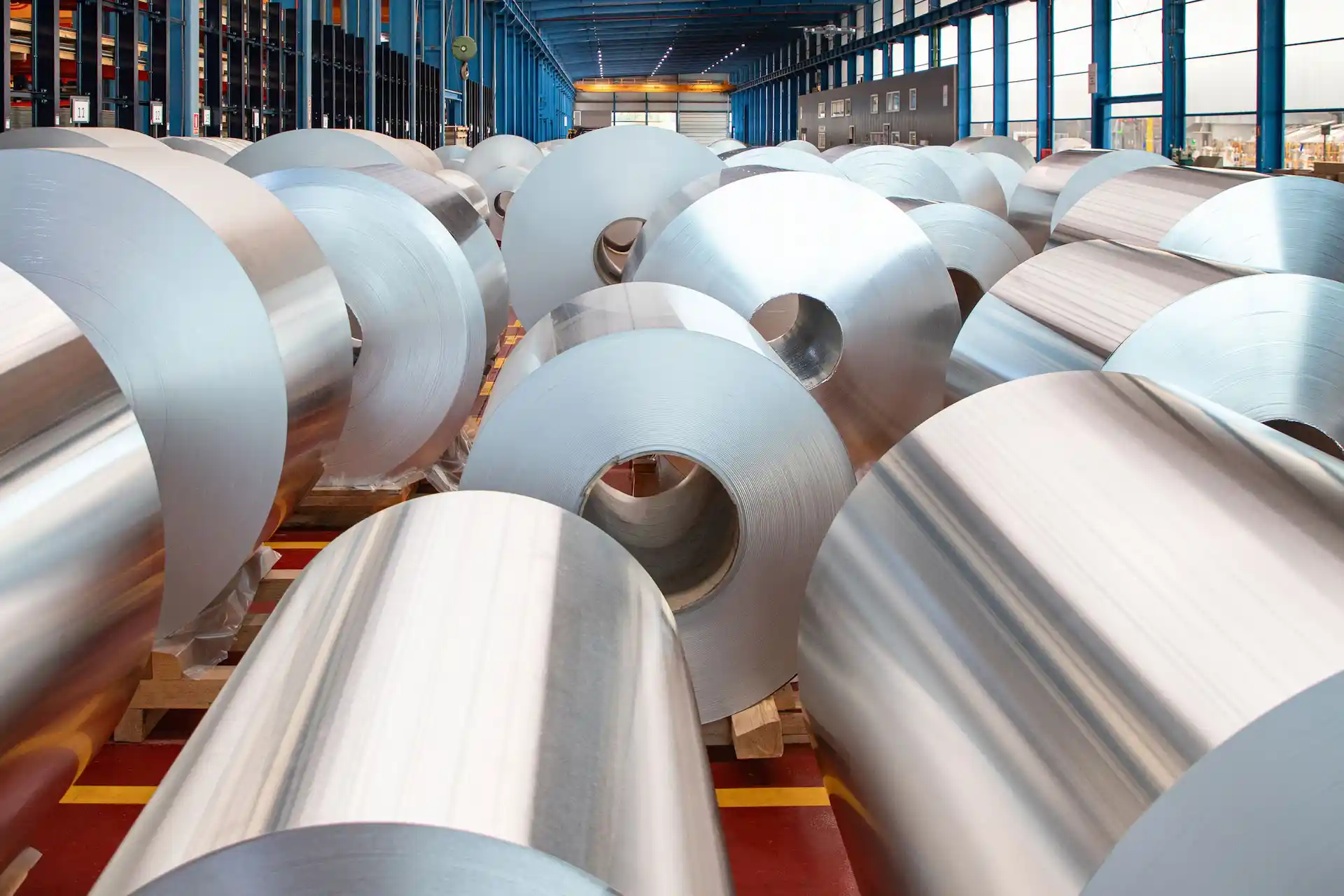Il contributo dell’alluminio riciclato all’economia circolare nel settore dell’edilizia.
L’alluminio è una delle materie prime più preziose e versatili del settore edile e si distingue per la sua infinita riciclabilità, che lo rende un componente chiave dell’economia circolare sostenibile.
L’alluminio è completamente riciclabile e conserva tutte le sue proprietà fisiche e chimiche dopo il processo di riciclaggio. Questo aspetto è fondamentale, in quanto consente un riutilizzo continuo del materiale senza che la sua qualità si deteriori.
Inoltre, l’energia richiesta per riciclare l’alluminio è solo il 5% di quella necessaria per produrre alluminio primario dal minerale di bauxite, il che rappresenta una significativa riduzione del consumo energetico e delle emissioni di gas serra.
Riciclo dell’alluminio a livello globale
Si stima che circa il 75% dell’alluminio prodotto nel mondo sia ancora in uso dopo il riciclo, a dimostrazione dell’efficacia e della diffusione di questo processo in diversi settori industriali.
La riciclabilità dell’alluminio consente di reintrodurre ogni anno milioni di tonnellate di questo materiale nel ciclo produttivo, favorendo l’economia circolare e riducendo la dipendenza dall’estrazione di nuove risorse minerarie.
Nel 2020, il tasso di efficienza globale di riciclo dell’alluminio ha raggiunto il 76%, consolidando la sua posizione come uno dei materiali più riciclati al mondo. Secondo l’Aluminum Association, in settori industriali come l’automotive e l’edilizia, i tassi di riciclo dell’alluminio possono superare il 90%, a testimonianza dell’impegno del settore verso la sostenibilità.
Uso dell’alluminio nell’edilizia
L’alluminio è un materiale fondamentale nell’industria dell’edilizia. Viene utilizzato, tra l’altro, per finestre, facciate, tetti, sistemi di protezione solare, pannelli solari, ringhiere, scaffalature e strutture temporanee. Circa il 25% dell’alluminio prodotto in tutto il mondo viene utilizzato in edilizia. La sua durabilità, la resistenza alla corrosione e le proprietà termiche lo rendono una delle scelte migliori per gli esterni degli edifici. Inoltre, la sua malleabilità consente di dare vita a espressioni architettoniche creative, superando i confini dell’edilizia convenzionale con opere che cambiano la personalità di una città.
Vantaggi dell’alluminio nell’edilizia sostenibile
- Leggerezza e resistenza: l’alluminio pesa solo un terzo dell’acciaio, il che lo rende ideale per la costruzione di grattacieli e strutture elevate grazie al suo elevato rapporto resistenza/peso.
- Durevolezza: resistente all’acqua, alla corrosione e ai raggi UV, l’alluminio non diventa più fragile con le basse temperature, ma migliora la sua resistenza alla trazione.
- Riflettività: le sue proprietà termoriflettenti lo rendono eccellente per tetti e rivestimenti, poiché contribuisce a mantenere gli edifici più freschi e a ridurre i costi legati al consumo di elettricità.
- Atossico e riciclabile: l’alluminio è intrinsecamente atossico e completamente riciclabile, promuovendo così l’economia circolare e riducendo i rifiuti.
- Efficienza energetica: l’uso di alluminio riciclato nell’edilizia consente di risparmiare fino al 95% di energia rispetto alla produzione di alluminio primario, riducendo in modo significativo le emissioni di CO2.

Processo di riciclaggio dell’alluminio
Il processo di riciclaggio dell’alluminio prevede diverse fasi chiave: l’alluminio viene raccolto da diverse fonti, tra cui prodotti a fine vita come telai di finestre, lattine e componenti di automobili. Il materiale raccolto viene poi selezionato e pulito per rimuovere impurità e materiali indesiderati. L’alluminio pulito viene sminuzzato in frammenti più piccoli per facilitarne la manipolazione e la lavorazione; i frammenti sminuzzati vengono poi fusi in forni per trasformarli in alluminio liquido. Infine, l’alluminio fuso viene versato in stampi per formare lingotti, che vengono poi laminati per creare dei fogli o modellati in varie forme a seconda delle esigenze industriali.
L’impegno di STACBOND per la sostenibilità
Noi di STACBOND perseguiamo la sostenibilità e la gestione efficiente delle risorse. Il nostro programma STACBOND RECYCLING assicura che i resti dei pannelli compositi in alluminio vengano riciclati in modo efficiente, promuovendo l’economia circolare e riducendo al minimo l’impatto ambientale della nostra produzione. Inoltre, tutti i nostri prodotti STACBOND A2 e STACBOND FR hanno ricevuto certificazioni ambientali di prodotto, EPD. Inoltre, abbiamo ottenuto la certificazione “Gestione Residuo Zero” da Bureau Veritas, la quale attesta che gestiamo i rifiuti generati in modo responsabile, evitando che vengano inviati in discarica. Tutto ciò è possibile grazie al loro recupero e successivo riciclo.
Il nostro processo di riciclaggio dei pannelli compositi in alluminio prevede diverse fasi: gli scarti dei pannelli vengono selezionati in base al tipo di nucleo: A2 o FR. Utilizziamo un sistema proprietario per separare il nucleo di alluminio dal pannello. Una volta separato, l’alluminio viene pressato per ridurne il volume e renderlo più facile da stoccare e maneggiare. Viene poi fuso per ottenere alluminio riciclato, che viene trasformato in bobine pronte per essere riutilizzate nella fabbricazione di nuovi prodotti. Il nucleo termoresistente viene triturato e ripulito dalle impurità per essere riutilizzato come materia prima nella produzione di nuovi pannelli STACBOND.



